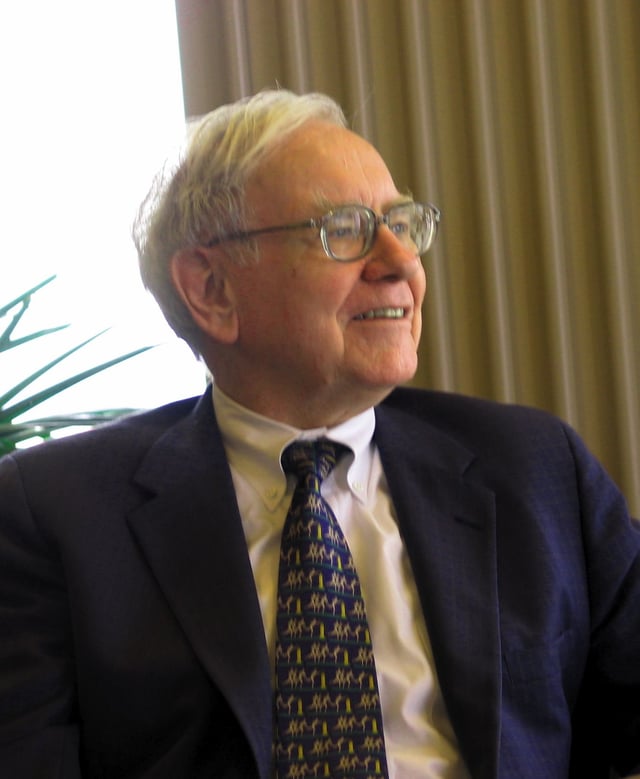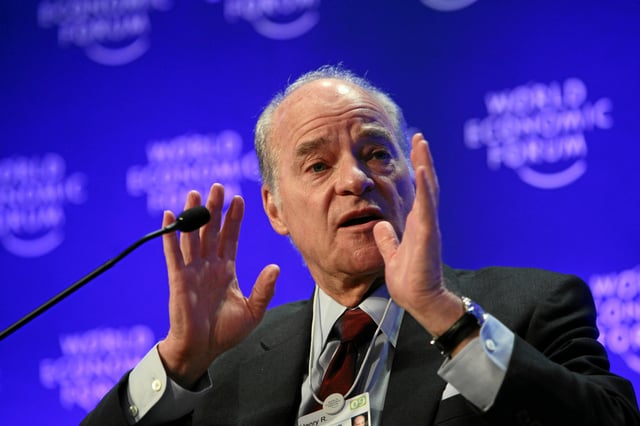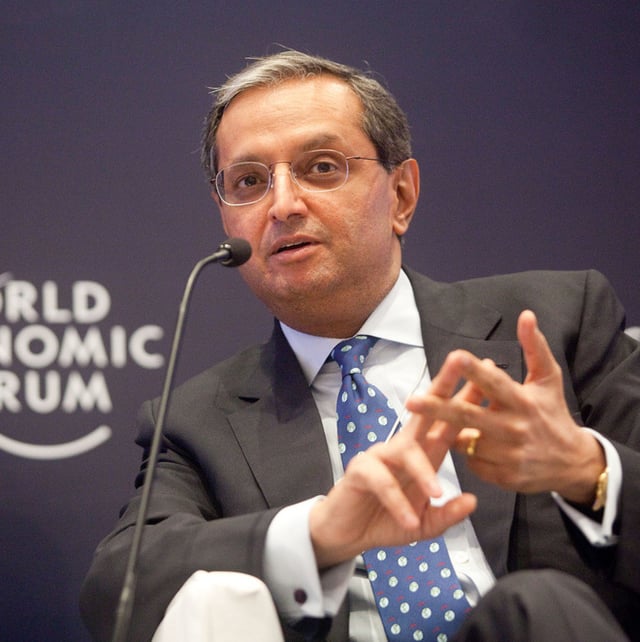Columbia Business School

Columbia Business School

| Type | Private business school |
|---|---|
| Established | 1916 |
| Endowment | $707 million[1] |
| Dean | Costis Maglaras |
Academic staff | 136 |
| Postgraduates | 1,433 |
| ≈100 | |
| Location | New York ,NY ,USA |
| Campus | Urban |
| Affiliations | Columbia University |
| Website | gsb.columbia.edu [85] |
| Business school rankings | |
| Worldwide overall | |
| QS[30] | 10 |
| Times Higher Education[31] | 13 |
| U.S. News & World Report[32] | 8 |
| Worldwide MBA | |
| Business Insider[33] | 7 |
| Economist[34] | 10 |
| Financial Times[35] | 9 |
| U.S. MBA | |
| Bloomberg Businessweek[36] | 7 |
| Forbes[37] | 6 |
| U.S. News & World Report[38] | 6 |
| Vault[39] | 7 |
Columbia Business School (CBS) is the business school of Columbia University in the City of New York in Manhattan, New York City. Established in 1916, Columbia Business School is one of the oldest business schools in the world. It is one of six Ivy League business schools, and has been referred to as among the most selective of top business schools.[2]
| Type | Private business school |
|---|---|
| Established | 1916 |
| Endowment | $707 million[1] |
| Dean | Costis Maglaras |
Academic staff | 136 |
| Postgraduates | 1,433 |
| ≈100 | |
| Location | New York ,NY ,USA |
| Campus | Urban |
| Affiliations | Columbia University |
| Website | gsb.columbia.edu [85] |
| Business school rankings | |
| Worldwide overall | |
| QS[30] | 10 |
| Times Higher Education[31] | 13 |
| U.S. News & World Report[32] | 8 |
| Worldwide MBA | |
| Business Insider[33] | 7 |
| Economist[34] | 10 |
| Financial Times[35] | 9 |
| U.S. MBA | |
| Bloomberg Businessweek[36] | 7 |
| Forbes[37] | 6 |
| U.S. News & World Report[38] | 6 |
| Vault[39] | 7 |
History

Logo introduced in the 1950s

Logo introduced in the 1990s
The school was founded in 1916 with 11 full-time faculty members and an inaugural class of 61 students, including 8 women. Banking executive Emerson McMillin provided initial funding in 1916, while A. Barton Hepburn, then president of Chase National Bank, provided funding for the School's endowment in 1919. The School expanded rapidly, enrolling 420 students by 1920, and in 1924 added a PhD program to the existing BS and MS degree programs.[3][4]
In 1952, CBS admitted its last class of undergraduates. The school currently offers executive education programs that culminate in a Certificate in Business Excellence (CIBE) and full alumni status, and several degree programs for the MBA and PhD degrees. In addition to the full-time MBA, the school offers four Executive MBA programs: the NY-EMBA Friday/Saturday program, the EMBA-Global program (launched in 2001 in conjunction with the London Business School), the EMBA-Americas program launched in 2012,[6] and the EMBA-Global Asia program (launched in 2009 in conjunction with the London Business School and the University of Hong Kong Business School). Students in jointly run programs earn an MBA degree from each of the cooperating institutions.
On July 1, 2004, R. Glenn Hubbard became Columbia Business School's eleventh dean. Hubbard, the former chair of President Bush's Council of Economic Advisers, has worked in the private, government and nonprofit sectors, and played a role in shaping national and international economic policy, including the deregulation policy leading up Wall Street bank failures in 2008. In Charles Ferguson's 2010 documentary, Inside Job, when prompted, Hubbard strongly maintains that his political and financial connections to government and Wall Street firms do not create any potential academic conflict of interest. Hubbard has announced plans to step down as dean in June 2019.[7]
Campus
Columbia Business School is primarily housed in Uris Hall, at the center of Columbia's Morningside Heights campus. An auxiliary space, Warren Hall, is situated on Amsterdam Avenue and is shared with the law school.[8]
In October 2010, Columbia Business School announced that alumnus Henry Kravis, the billionaire co-founder of private-equity firm Kohlberg Kravis Roberts (KKR & Co.), pledged $100 million to fund expansion of Columbia Business School, the largest gift in its history. The donation will go toward construction of the business school’s new site in the Manhattanville section of New York City, where Columbia University is extending its campus. One of the school’s two new buildings will be named for Kravis.[9] The buildings will be designed by Diller Scofidio + Renfro.[10] In December 2012, Ronald Perelman also donated $100 million to the construction of the second business school building.
MBA program
The revised core curriculum, launched in the fall of 2008, represents about 40% of the degree requirement.[13] It consists of 2 full courses and 12 half-term courses including Corporate Finance, Financial Accounting, Managerial Statistics, Managerial Economics, Leadership, Operations Management, and Marketing Strategy.[14] While the first year of the program is usually devoted to completing the requirements of the core curriculum, the second year provides students with the opportunity to choose from the more than 130 elective courses available at the School and supplement them with more than 4,000 graduate-level classes from the University's other graduate and professional schools.[15] Among the most popular electives at Columbia Business School are the Economics of Strategic Behavior, Financial Statement Analysis and Earnings Quality, Launching New Ventures, Modern Political Economy, and the Seminar in Value Investing.[15]
Columbia Business School has a firm grade non-disclosure policy, stating that students refrain from disclosing specific class grades, GPAs, or transcripts until they accept full-time, post graduation positions.[16] Students enter Columbia's MBA program in two tracks. The traditional fall term is approximately 550 students, while the January term "J-Term" is approximately 200 students. Students entering in the fall are divided into eight clusters of approximately 65 students that take all first year core classes together. J-Term students are broken into three clusters. The J-Term is aimed at students who want an accelerated 18-month program who usually plan to return to their previous job, are company sponsored, and will not pursue a summer internship because they take classes during the summer.
The recently launched Columbia CaseWorks program utilizes the faculty’s research and industry experience and brings that perspective into the classroom through the development of new cases and teaching materials.[17] Beginning in orientation and continuing through core classes and electives, students are immersed in cases that use faculty research to address real-world business issues. Columbia CaseWorks challenges students to debate corporate decision making and to develop appropriate recommendations and solutions. During their first year, students study and discuss an integrated case that focuses on a single company and is incorporated into several core courses. This encourages students to think about a company holistically, analyzing it from the perspective of various disciplines.[18]
In 2013, the median starting base salary was $110,000, with a median $30,000 signing bonus and a median $20,000 of other guaranteed compensation.[19] According to Forbes magazine, 90% of billionaires with MBAs who derived their fortunes from finance obtained their master's degree from one of three schools: Harvard Business School, Columbia Business School, or The Wharton School at the University of Pennsylvania.[20]
Academic Divisions
The School's faculty are divided into five academic units:[21]
Accounting
Decision, Risk, and Operations
Finance and Economics
Management
Marketing
Areas of focus
Though there are no official tracks within Columbia Business School, many students choose to focus on a particular area in order to gain deeper knowledge in a specific discipline. Columbia Business School offers the following areas of focus:[22]
Accounting
Consulting
Decision, Risk and Operations
Entrepreneurship
Finance and Economics
Healthcare and Pharmaceutical Management
Human Resource Management
International Business
Management / Leadership
Marketing
Media
Private Equity
Real Estate
Social Enterprise
Value Investing
As part of its MBA curriculum, Columbia Business School offers the Value Investing Program at the Heilbrunn Center for Graham & Dodd Investing, for a handful of selected business school students.[23] The program includes Applied Value Investing and Special Situations Investing. Adjunct professors include hedge fund managers, such as Joel Greenblatt,[24] Paul Sonkin,[25] Ken Shubin Stein and William Von Mueffling.[26] The program also features an extensive list of guest speakers which include Seth Klarman, Michael Price, Bill Nygren, Charles Brandes, David Einhorn and Chris Browne. Notable graduates of the value investing program include Warren Buffett, Mario Gabelli, Leon G. Cooperman, Chuck Royce, Paul Sonkin and William von Mueffling.
Columbia Business School's Entrepreneurship Program trains students for four career paths: entrepreneurship in new ventures, entrepreneurship in large organizations, private equity financing and social entrepreneurship.[27] Consequently, entrepreneurship among Columbia MBA students is on the rise, with 20 students in the MBA Class of 2007 starting their own businesses directly after graduation.[28] To supplement its Entrepreneurship Program, the Business School launched, in June 2012, an entrepreneurship lab in downtown Manhattan, an incubator space for entrepreneurs.
Columbia Business School has a strong presence in consulting. All top five new MBA employers are consulting firms, with McKinsey alone offering positions to 50 new graduates in 2014. Over 30% of new graduates choose a career in consulting.[29]
MBA rankings
For 2017, national rankings of Columbia’s MBA program include #6 by Forbes,[40] #9 by Bloomberg Businessweek,[41] and #6 by U.S. News and World Report.[42] In global rankings, Columbia was ranked #9 by The Economist[43] and #7 by the Financial Times in 2018.[44]
In its 2017 ranking of the top-20 business schools in the Americas, the Financial Times ranked Columbia #2.[45]
Dual-degree programs
Columbia Business School students can combine an MBA with one of ten other professional degrees. In general, a dual degree requires one less year than it would take to complete the two degrees separately. Candidates must apply separately to Columbia Business School and the other degree program.[46]
Dual degrees offered with the following schools include:
School of Architecture, Planning and Preservation
College of Dental Medicine
School of Engineering and Applied Science
School of International and Public Affairs
School of Nursing
College of Physicians and Surgeons
School of Public Health
School of Social Work
Student life
The Columbia Business School Follies is a student club that works throughout each semester to put together a production in which students write, choreograph, and perform comedy skits. It achieved notoriety in 2006[49][50][51] for "Every Breath Bernanke Takes", its video parody of the Police song "Every Breath You Take". It purports to be from Glenn Hubbard, Dean of the Business School, in response to Hubbard's being a runner-up to the Fed Chairmanship assumed by Ben Bernanke.
Admission to the MBA program
Key Admission Stats – Columbia MBA:[52]
Average GPA of admits: 3.6
Average GMAT of admits: 732
Average Age of admits: 28
Admission requirements include a bachelor's degree or its equivalent from an accredited institution, three essays, two letters of recommendation, a GMAT or GRE score and a TOEFL or PTE score for international applicants.
Executive MBA programs
Columbia offers various executive MBA programs.
The Executive MBA (EMBA) Friday/Saturday Program is a 20-month graduate program designed for individuals that are looking to enhance their education without interrupting their careers. The EMBA program is taught on campus at Columbia University by full-time faculty. The first year of classes consists of the same core curriculum as the Full-Time MBA program. Executive education is the focus of the second year. This Friday/Saturday program is targeted at individuals with approximately 10 years of work experience.[53]
The Executive MBA (EMBA) Saturday Program is a 24-month graduate degree program designed for individuals that are looking to enhance their education, but cannot take any time away from work. This program is the same as the Friday/Saturday program, with the exception that classes only meet on Saturdays over a longer period of time.
In addition to the New York-based EMBA Program, Columbia offers three partner programs to meet the differing needs and geographical distribution of prospective students.[54] Because students in the partner EMBA programs must satisfy the separate requirements of each school, they earn an MBA degree from each participating university. Likewise, they become alumni of each university and business school and may avail themselves of all programs and privileges afforded to alumni.
The EMBA-Global Americas & Europe program is a 20-month program administered in partnership with the London Business School. The program enrolls approximately 70 students from around the world per year. Courses are taught by the full-time faculty of both schools. During the first year, the core curriculum classes alternate monthly between the campuses of Columbia University and the London Business School. The core curriculum is similar to that offered in the regular EMBA programs offered separately by each school, but with a more transnational-business emphasis. Second year classes may be selected from the portfolio of EMBA classes offered at either or both partner schools.[55]
The EMBA-Global Asia, run jointly with the London Business School and the University of Hong Kong. This 20-month program follows a curriculum similar to the EMBA-Global program. Classes are held in Hong Kong, London, New York, and Shanghai.
EMBA rankings
#2 worldwide, #2 US Program, Businessweek, 2011 Executive MBA Rankings[56]
#2 worldwide, Financial Times, 2010 Executive MBA Rankings, Global-EMBA program[57]
#3 US Program, #13 worldwide. Financial Times, 2010 Executive MBA Rankings, Berkeley-Columbia program[57]
#4 US Program, #15 worldwide. Financial Times, 2010 Executive MBA Rankings, NY-EMBA program[57]
#5 US News and World Report 2010 Rankings[58]
#4 BusinessWeek Executive MBA Rankings, NY-EMBA program[59]
#9 Wall Street Journal Executive MBA Rankings, 2010, NY-EMBA program[60]
MS Programs
Columbia Business School offers three separate Master of Science degrees in Management Science & Engineering, Financial Economics and Marketing. Admission to the programs is extremely competitive: in 2011, there were 543 applicants to the Financial Economics program and only 10 students were accepted.[61]
Doctoral Program
The degree of Doctor of Philosophy (PhD) is offered by the Graduate School of Arts and Sciences and is administered by the Business School. Admission is highly competitive with 894 applicants in 2010 for positions in an entering class of 18 students (2%).[62] A PhD in Management or Business is a common precursor to an academic career in business schools.
Throughout the program, students become familiar with research methods and the literature of their major fields through research projects and directed reading.[63] Doctoral candidates begin the program mastering basic research tools by studying subjects such as economics, behavioral science and quantitative methods, in addition to completing course work and examinations in the major field of study. The completion of course work and qualifying examinations normally requires two to three years.
The research phase begins as early as the first year, when students serve as research assistants, and continues throughout their time at the School.[63] Students gradually become more involved in the design and execution of research and, by the end of the second year, have typically produced at least one paper suitable for publication, often as coauthor with a faculty member. The later years of the program are dedicated to original research and the creation of the dissertation.
Recent Columbia Ph.D. program graduates have placed in the following institutions: Harvard Business School, Wharton School, London Business School, Kellogg School of Management, Cornell University, University of Notre Dame, Stern School of Business, University of Minnesota, Fordham University, Polytechnic University, Baruch College, University of Washington, EWHA Womans University, Hong Kong University of Science and Technology, University of Toronto, IAE Business and Management School, Universidad Austral, and University of Texas at Austin.[64]
Executive Education
Columbia Business School Executive Education offers custom non-degree programs for organizations[65] and open-enrollment non-degree programs for individuals[66] in topics including management, finance, leadership, marketing, social enterprise, and strategy. The school also offers executive certification programs, including the Advanced Management Program,[67] the Certificate in Business Excellence[68] and the Senior Leaders Program for Nonprofit Professionals.[69]
CIBE
|
Research centers, programs, and institutes
Research centers, special programs, institutes, and cross-disciplinary areas at Columbia Business School include:[72]
Arthur J. Samberg Institute for Teaching Excellence
The Behavioral Lab
The Center for Decision Sciences
Center for Excellence in Accounting and Security Analysis
Center on Global Brand Leadership
Center on Japanese Economy and Business
Columbia Institute for Tele-Information
Columbia University Center for International Business Education Research
Competitive Strategy
Decision Making and Negotiations
Eugene Lang Center for Entrepreneurship
Healthcare and Pharmaceutical Management Program
The Heilbrunn Center for Graham & Dodd Investing
Jerome A. Chazen Institute of International Business
The Media Program
The Paul Milstein Center for Real Estate
Private Equity Program
Program for Financial Studies
Program on Social Intelligence
Richard Paul Richman Center for Business, Law, and Public Policy
The Sanford C. Bernstein & Co. Center for Leadership and Ethics
The Social Enterprise Program
W. Edwards Deming Center for Quality, Productivity and Competitiveness
People
Faculty
Columbia Business School employs 136 full-time faculty members,[73] including Joseph Stiglitz, the 2001 Nobel laureate in economics who also teaches at the university's School of International and Public Affairs; and Bernd Schmitt, the Robert D. Calkins Professor of International Business. The current Dean is the former Presidential Council of Economic Advisors Chairman Glenn Hubbard. Hedge fund gurus Joel Greenblatt and Ken Shubin Stein are currently adjunct professors. Bruce Greenwald teaches Value Investing and Economics of Strategic Behavior electives. Adam Dell, brother of Dell Inc. CEO Michael Dell, is a venture capitalist who teaches Business Innovation and Technology. Jonathan Knee teaches Media, Mergers, and Acquisitions and is the author of a book titled "The Accidental Investment Banker". James Freeman teaches Investment Banking and is the CEO of a boutique investment bank by the same name. Frederic Mishkin, member of the Board of Governors of the Federal Reserve System, returned to teach at CBS starting fall 2008.[74] Rita Gunther McGrath is a well known member of the strategy faculty and the author of four books on the subject, most recently The End of Competitive Advantage: How to Keep Your Strategy Moving as Fast As Your Business (2013, Harvard Business Review Publishing) Steve Blank created the Lean LaunchPad class that he teaches a scientific method for teaching entrepreneurship that combines experiential learning with the three building blocks of a successful Lean Startup [75]
Alumni

Warren Buffett, CEO of Berkshire Hathaway

Henry Kravis, Founder of Kohlberg Kravis Roberts

Vikram Pandit, Ex-CEO of Citigroup

David Dodd, Father of value investing

Nand Khemka, Chairman of SUN Group
Columbia Business School has over 44,000 living alumni. Some of the more notable alumni include the following:
See also
Economics
Glossary of economics